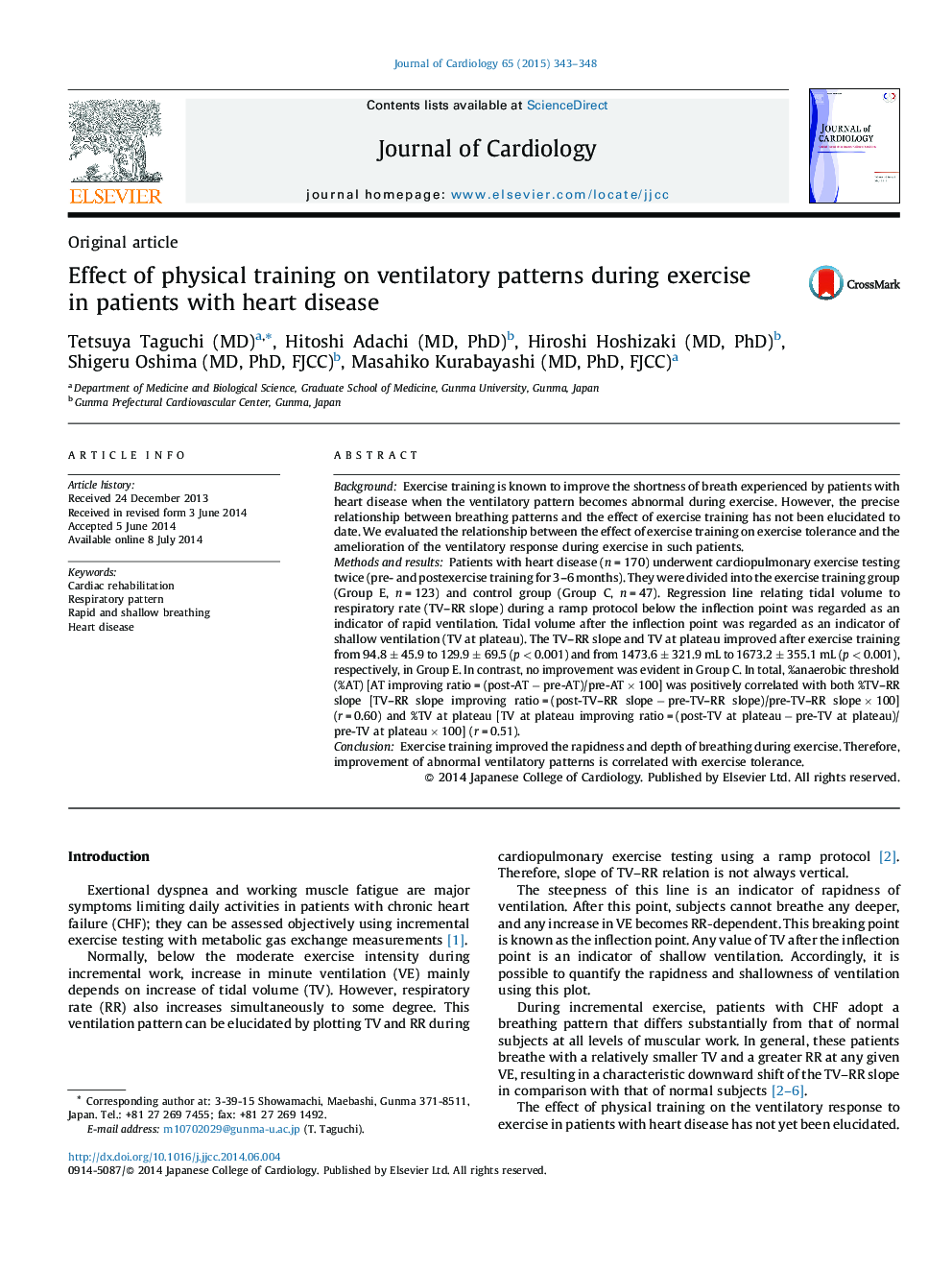| کد مقاله | کد نشریه | سال انتشار | مقاله انگلیسی | نسخه تمام متن |
|---|---|---|---|---|
| 2963073 | 1178528 | 2015 | 6 صفحه PDF | دانلود رایگان |
BackgroundExercise training is known to improve the shortness of breath experienced by patients with heart disease when the ventilatory pattern becomes abnormal during exercise. However, the precise relationship between breathing patterns and the effect of exercise training has not been elucidated to date. We evaluated the relationship between the effect of exercise training on exercise tolerance and the amelioration of the ventilatory response during exercise in such patients.Methods and resultsPatients with heart disease (n = 170) underwent cardiopulmonary exercise testing twice (pre- and postexercise training for 3–6 months). They were divided into the exercise training group (Group E, n = 123) and control group (Group C, n = 47). Regression line relating tidal volume to respiratory rate (TV–RR slope) during a ramp protocol below the inflection point was regarded as an indicator of rapid ventilation. Tidal volume after the inflection point was regarded as an indicator of shallow ventilation (TV at plateau). The TV–RR slope and TV at plateau improved after exercise training from 94.8 ± 45.9 to 129.9 ± 69.5 (p < 0.001) and from 1473.6 ± 321.9 mL to 1673.2 ± 355.1 mL (p < 0.001), respectively, in Group E. In contrast, no improvement was evident in Group C. In total, %anaerobic threshold (%AT) [AT improving ratio = (post-AT − pre-AT)/pre-AT × 100] was positively correlated with both %TV–RR slope [TV–RR slope improving ratio = (post-TV–RR slope − pre-TV–RR slope)/pre-TV–RR slope × 100] (r = 0.60) and %TV at plateau [TV at plateau improving ratio = (post-TV at plateau − pre-TV at plateau)/pre-TV at plateau × 100] (r = 0.51).ConclusionExercise training improved the rapidness and depth of breathing during exercise. Therefore, improvement of abnormal ventilatory patterns is correlated with exercise tolerance.
Journal: Journal of Cardiology - Volume 65, Issue 4, April 2015, Pages 343–348
